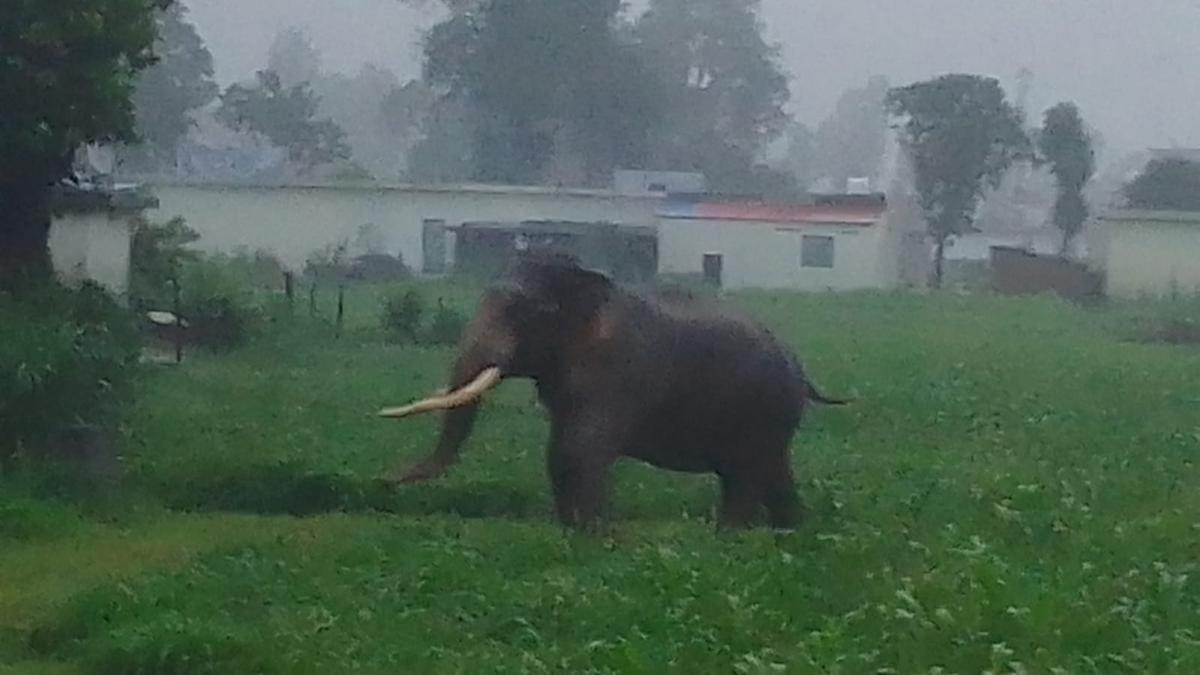
Project Elephant debuts in Himachal Pradesh as jumbo tuskers make a beeline
The Hindu
Rare movement of elephants from Uttarakhand to Himachal Pradesh increasing in past few yrs, leading to human-elephant conflict. To address this, 'Project Elephant' introduced in Himachal. Centre approved Rs 87 lakh for the project, to protect elephants, their habitats & corridors, & address conflict. Officials to install watchtowers, trenches, solar fencing, & kick off awareness exercises to aid elephant management & conservation.
Off late, a rare occurrence has been observed with a set of elephants having started to make a beeline in the hill State of Himachal Pradesh from the neighbouring forests of Uttarakhand. In response to the movement of these tuskers started to increase in the past couple of years, which gave rise to the human-elephant conflict, ‘Project Elephant’ made its debut in Himachal Pradesh.
Over the years, human-elephant conflict has become a major conservation concern, and has posed a challenge for elephant management across parts of India. Recently, a similar situation started to emerge in Himachal Pradesh as well. To deal with the situation, the ‘Project Elephant’ has now been introduced in the State - aimed at protecting the habitat and corridors of elephants, while also safeguarding human lives, their livelihood, and their properties, and in the process minimising human-elephant conflict.
In the past, there has been isolated or rare movement of elephants from Rajaji National Park in Uttarakhand to neighbouring forests of Himachal Pradesh. However, in the past two or three years the number of tuskers travelling to Himachal has gone up. While this has brought joy for wildlife enthusiasts it has also caused much worry for the local populace.
Traditionally, the movement of elephants has been largely concentrated in areas such as Kaunch Valley and other areas close to the river Yamuna, which runs between the borders of Himachal Pradesh and Uttarakhand. In the past two years, however, the jumbos could be seen regularly and in increased numbers in the Majra and Girinagar regions of Paonta Sahib territorial division, and Kolar and Nahan ranges of Nahan division in the Sirmour district of Himachal Pradesh, coming from the Rajaji National Park in Uttarakhand. According to the wildlife wing of Himachal Pradesh Forest Department, close to a dozen elephants had been consistently strolling in the state’s territory falling in Sirmour.
These jumbos usually move between Rajaji National Park-Chakrata-Colnel Sherjung National Park (Simbalbara)-Paonta-Nahan ranges, and further to Kalesar in Haryana at times. The distance they are travelling is invariably close to 40 kilometres from Uttarakhand’s forests, which local wildlife officials consider as a ‘long distance’ movement.
These elephants usually cross over to Himachal when there’s a reduced water level in Yamuna. While there is not one clear reason behind the increased movement of tuskers towards the forests in Himachal, wildlife experts assert that the rising human imprints within the ‘elephant corridors’ have resulted in a habitat loss for the elephants, pushing them to find new spaces.
The expanding human habitation, encroachments, and construction activities such as road-railway tracks are a few reasons that adversely impact the movement of elephants and create disturbances in their home ground. The chances of human-elephant conflict situations also rise, which invariably results in undesirable consequences for humans and elephants.













